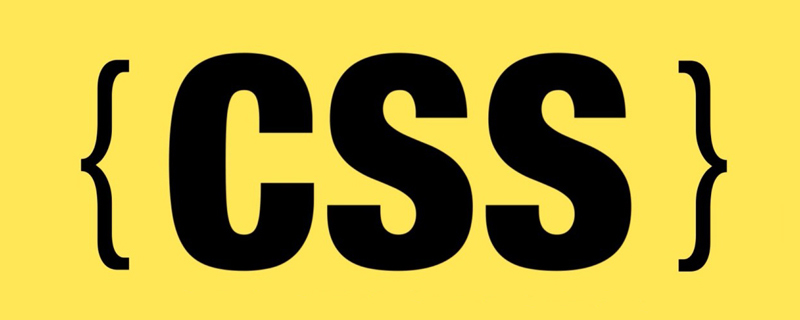
When we write CSS styles, we often encounter changes in CSS styles or interface design. After the CSS of the page has been modified in several versions, some styles may have been used. No, perhaps some styles were renamed and the original ones were forgotten to be deleted. In short, there may be some useless styles on the page.
These useless wastes of server space and bandwidth consumption will also increase our maintenance costs. So are there any ways to clean up those useless styles? Today let us take a look at some of the more useful tools.
1. Dust-Me selectors
Dust-Me is a very useful and easy-to-use Firefox plug-in. It can analyze all the calls in your page. CSS files and analyze those that are not used in the page.
Supports local and remote style files, including style files introduced using tags, processing instructions, @import statements, etc.; (but does not support style files in the page
Support style files introduced in IE conditional comments;
You can check a page or the entire website;
Support CSS1 selectors, most CSS2 and CSS3 selectors;
Understand common CSS hacks, such as "* html #fuck-ie" will be considered "html #fuck-ie";
Supports Firefox 3.5 and Firefox 3.0. In fact, thanks to the improvements in the js engine of FF 3.5, the performance in FF 3.5 is 50% higher than that of FF 3.0.

Installation: Click here. At the same time, you can download the source code of the project. For more information, please visit Dust-Me selector official page.
2. Page Speed
Page Speed is a front-end performance analysis tool provided by Google. It is somewhat similar to YSlow, but it provides some more personalized and useful tools. , such as Remove unused CSS:
Page Speed relies on Firebug just like YSlow.

Page Speed relies on Firebug like YSlow. For details and installation, please visit here.
3. CSS Redundancy Checker
CSS Redundancy Checker is a free online application that can check all pages that use a certain CSS file for useless styles. You can check the usage of a certain style in multiple pages at the same time.
The disadvantage of this tool is that although it can check multiple HTML pages at a time, it can only check one CSS file at a time, and you have to enter it manually:

四、IntelliJ IDEA
IntelliJ IDEA This is a quite powerful IDE, similar to DreamWeaver, but it is not used much in China. The software includes an on-the-fly Code Analysis tool that can analyze unused classes and ids in CSS files.
5. Expression Web
Expression Web, as Microsoft’s new generation website development tool, is still used by many people. Its CSS Report function can check unused needs Cleared CSS (I have indeed never used EW to develop a website. I hope children who use this software can help confirm this).
Summary:
Of course there may be other tools not mentioned here. If you know something about it, you can share it with everyone.
In addition, we usually write the style of the entire website into one or more style files, and then call them all in the page or call them in modules. In 52CSS.com’s article on website style file organization, There have been introductions.
Then the style in a certain CSS file may not be used in a certain page but is used in other pages. Therefore, when using these tools to detect redundant styles in CSS files, you need to keep Be cautious, clearing the style may affect other pages
So the check results provided by page speed only apply to a single page, not the entire website, but when using Dust-Me or CSS Redundancy Checker, you can Checking the entire website or multiple pages of the website at the same time may avoid mistakes.
Thank you everyone for reading, I hope you will benefit a lot.
This article is reproduced from: https://blog.csdn.net/wuchengzhi82/article/details/8669052
Recommended tutorial: "CSS Tutorial"
The above is the detailed content of How to clean up useless CSS styles, do you know?. For more information, please follow other related articles on the PHP Chinese website!
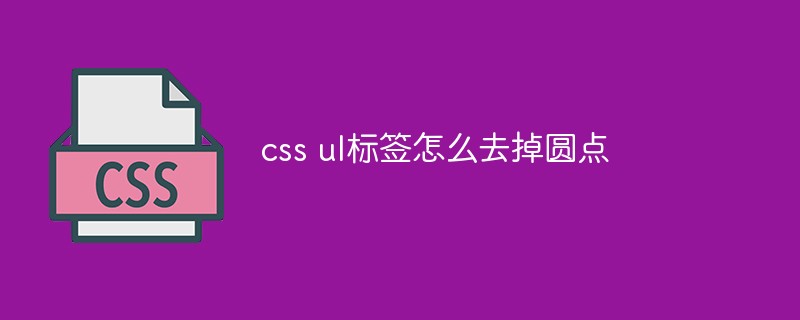 css ul标签怎么去掉圆点Apr 25, 2022 pm 05:55 PM
css ul标签怎么去掉圆点Apr 25, 2022 pm 05:55 PM在css中,可用list-style-type属性来去掉ul的圆点标记,语法为“ul{list-style-type:none}”;list-style-type属性可设置列表项标记的类型,当值为“none”可不定义标记,也可去除已有标记。
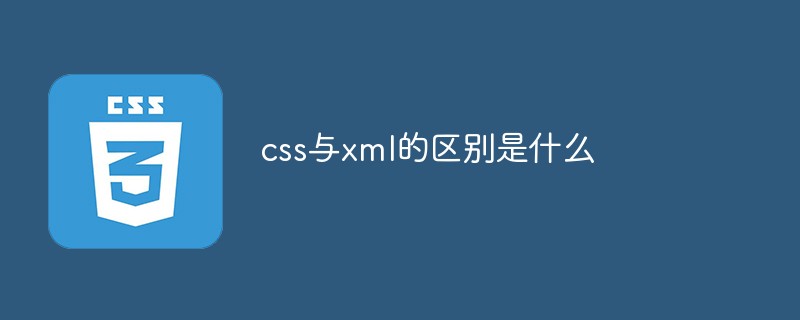 css与xml的区别是什么Apr 24, 2022 am 11:21 AM
css与xml的区别是什么Apr 24, 2022 am 11:21 AM区别是:css是层叠样式表单,是将样式信息与网页内容分离的一种标记语言,主要用来设计网页的样式,还可以对网页各元素进行格式化;xml是可扩展标记语言,是一种数据存储语言,用于使用简单的标记描述数据,将文档分成许多部件并对这些部件加以标识。
 css3怎么实现鼠标隐藏效果Apr 27, 2022 pm 05:20 PM
css3怎么实现鼠标隐藏效果Apr 27, 2022 pm 05:20 PM在css中,可以利用cursor属性实现鼠标隐藏效果,该属性用于定义鼠标指针放在一个元素边界范围内时所用的光标形状,当属性值设置为none时,就可以实现鼠标隐藏效果,语法为“元素{cursor:none}”。
 rtl在css是什么意思Apr 24, 2022 am 11:07 AM
rtl在css是什么意思Apr 24, 2022 am 11:07 AM在css中,rtl是“right-to-left”的缩写,是从右往左的意思,指的是内联内容从右往左依次排布,是direction属性的一个属性值;该属性规定了文本的方向和书写方向,语法为“元素{direction:rtl}”。
 css怎么实现英文小写转为大写Apr 25, 2022 pm 06:35 PM
css怎么实现英文小写转为大写Apr 25, 2022 pm 06:35 PM转换方法:1、给英文元素添加“text-transform: uppercase;”样式,可将所有的英文字母都变成大写;2、给英文元素添加“text-transform:capitalize;”样式,可将英文文本中每个单词的首字母变为大写。
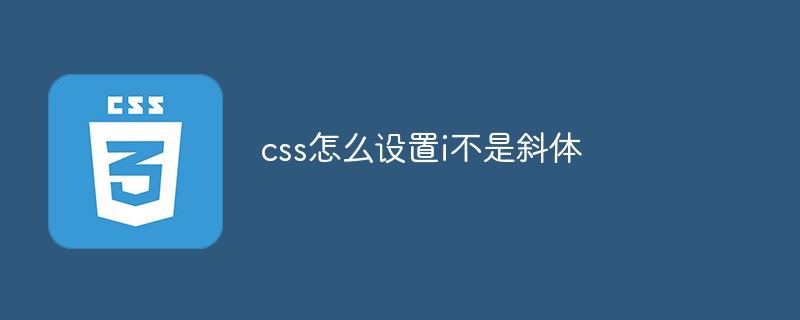 css怎么设置i不是斜体Apr 20, 2022 am 10:36 AM
css怎么设置i不是斜体Apr 20, 2022 am 10:36 AM在css中,可以利用“font-style”属性设置i元素不是斜体样式,该属性用于指定文本的字体样式,当属性值设置为“normal”时,会显示元素的标准字体样式,语法为“i元素{font-style:normal}”。
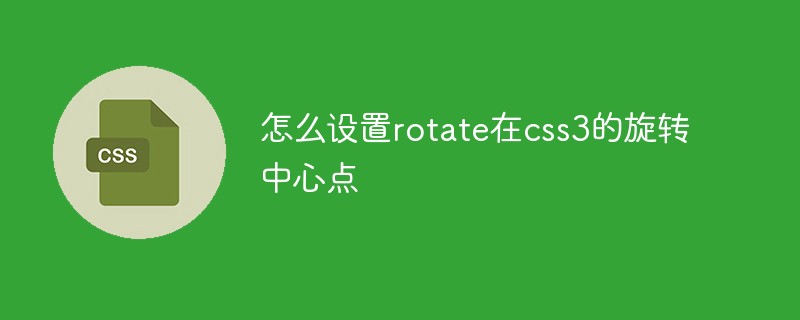 怎么设置rotate在css3的旋转中心点Apr 24, 2022 am 10:50 AM
怎么设置rotate在css3的旋转中心点Apr 24, 2022 am 10:50 AM在css3中,可以用“transform-origin”属性设置rotate的旋转中心点,该属性可更改转换元素的位置,第一个参数设置x轴的旋转位置,第二个参数设置y轴旋转位置,语法为“transform-origin:x轴位置 y轴位置”。


Hot AI Tools

Undresser.AI Undress
AI-powered app for creating realistic nude photos

AI Clothes Remover
Online AI tool for removing clothes from photos.

Undress AI Tool
Undress images for free

Clothoff.io
AI clothes remover

AI Hentai Generator
Generate AI Hentai for free.

Hot Article

Hot Tools

SublimeText3 English version
Recommended: Win version, supports code prompts!

Safe Exam Browser
Safe Exam Browser is a secure browser environment for taking online exams securely. This software turns any computer into a secure workstation. It controls access to any utility and prevents students from using unauthorized resources.

Zend Studio 13.0.1
Powerful PHP integrated development environment

DVWA
Damn Vulnerable Web App (DVWA) is a PHP/MySQL web application that is very vulnerable. Its main goals are to be an aid for security professionals to test their skills and tools in a legal environment, to help web developers better understand the process of securing web applications, and to help teachers/students teach/learn in a classroom environment Web application security. The goal of DVWA is to practice some of the most common web vulnerabilities through a simple and straightforward interface, with varying degrees of difficulty. Please note that this software

mPDF
mPDF is a PHP library that can generate PDF files from UTF-8 encoded HTML. The original author, Ian Back, wrote mPDF to output PDF files "on the fly" from his website and handle different languages. It is slower than original scripts like HTML2FPDF and produces larger files when using Unicode fonts, but supports CSS styles etc. and has a lot of enhancements. Supports almost all languages, including RTL (Arabic and Hebrew) and CJK (Chinese, Japanese and Korean). Supports nested block-level elements (such as P, DIV),





